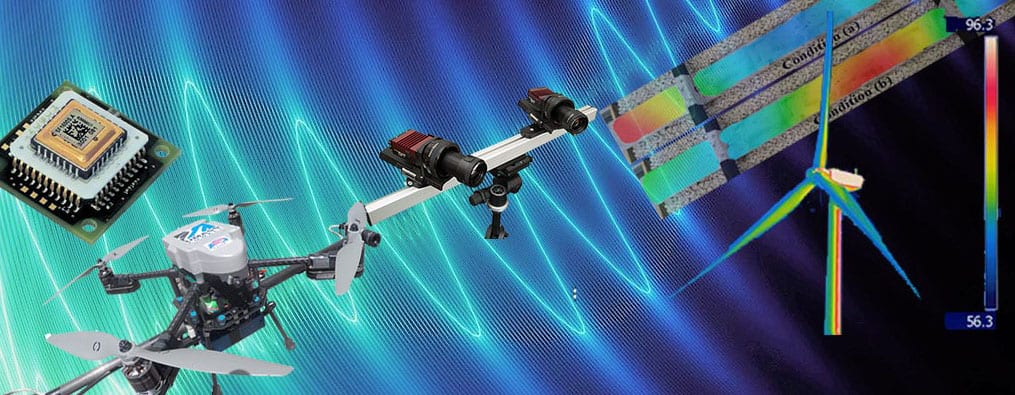
Conventional excitation techniques typically use an impact hammer, piezoelectric actuator, or mechanical shaker excitation for experimental modal testing. However, the use of these devices may be challenging if accurate high-frequency dynamic measurements on small or lightweight structural parts have to be performed. To overcome these problems, the high-frequency radiation force generated by focused ultrasonic transducers (FUTs) can be used. One of the most important features of the radiation force is the very small size of the focal spot that make this approach suitable when non-contact excitation of light weighted structures has to be performed.
However, the FUT-generated sound pressure radiation in the air, and the resulting radiation force imparted onto a structure, is not well understood and critically crucial for performing accurate modal analysis and system identification. In this research, the technical development of ultrasound radiation pressure mapping is studied both experimentally and analytically.
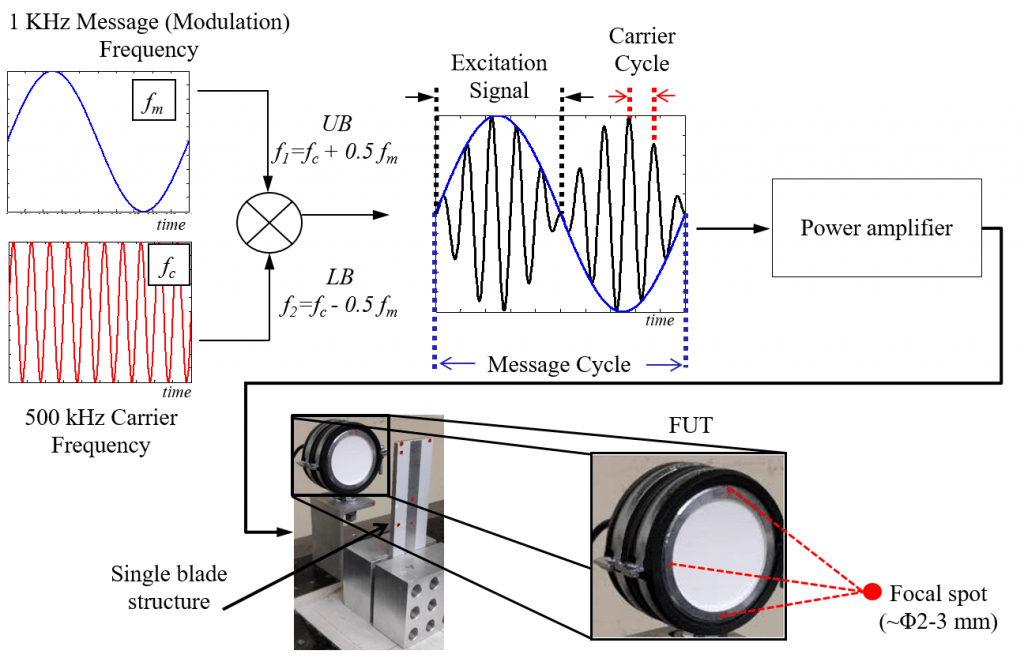
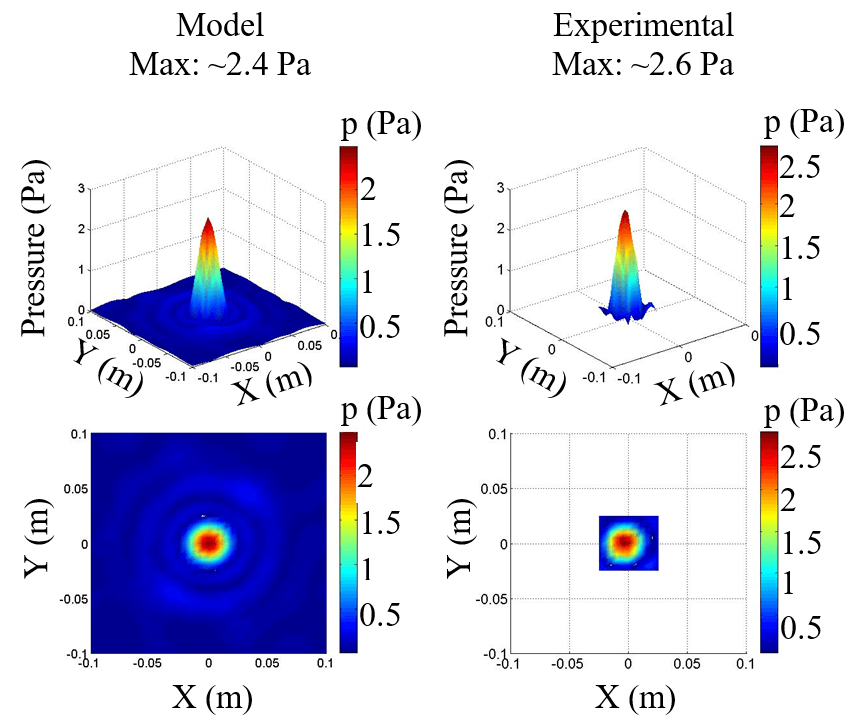
Since experimentation has suggested that the FUT’s location and size of the focal point have frequency dependency, the acoustic pressure field generated by the transducer in the lower frequency range (i.e., 50 – 80 kHz) has been experimentally mapped with an acoustic microphone and compared with that calculated by an acoustic boundary element method (BEM) model based on the Rayleigh Integral. The model, using the distributed surface vibration of the transducer, has then been used to simulate the radiated sound pressure field with excitation in a high-frequency range (i.e., 300 – 400 kHz).
As operated at those frequencies, the transducer has been found to have an acoustic spot diameter of ~3mm, an extended focal region (i.e., more than 20 mm in length) where the pressure is substantially uniform and higher than 1000 Pa. The proposed method was also shown to be accurate in predicting the direct acoustic force generated by the FUT as it is excited using a double sideband suppressed carrier amplitude modulation (DSB-SC AM) signal, a method that allows using ultrasound frequency carrier signals to excite the dynamic response of a structure in the frequency range of interest for modal analysis.
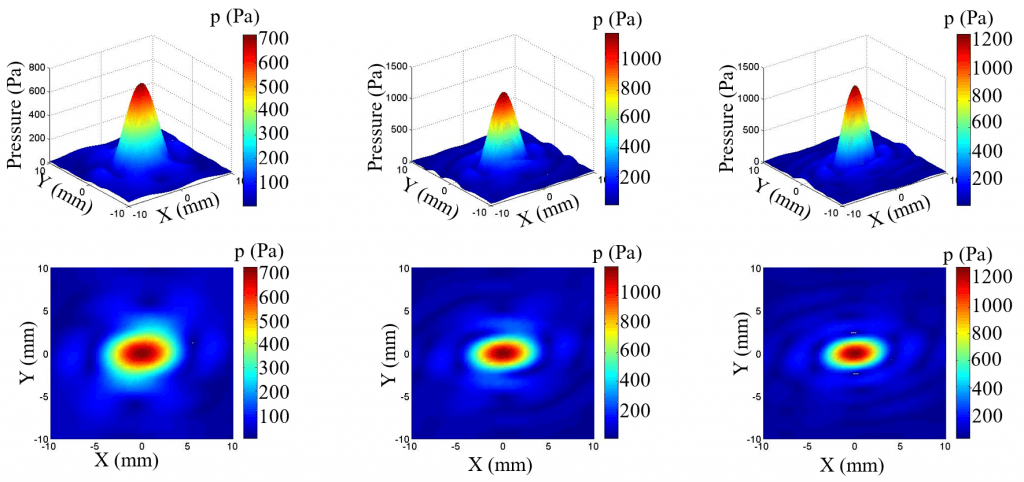
To finish, the capability of the FUT as an excitation technique for modal analysis was validated by performing, a back-to-back comparison with a modal test carried out using a traditional excitation system (i.e., shaker). Analysis of the results shows a good agreement between both resonant frequencies and mode shapes as the two excitation techniques are employed as shown below.

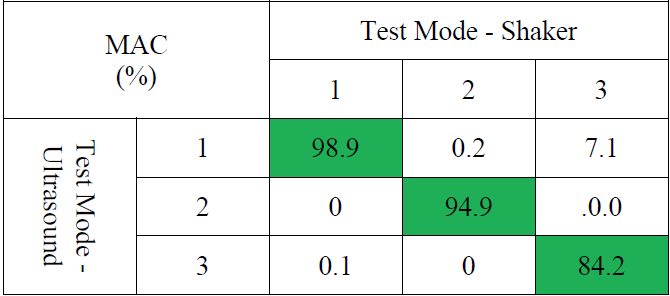
The publications describing the details of this research can be downloaded using the following links:
